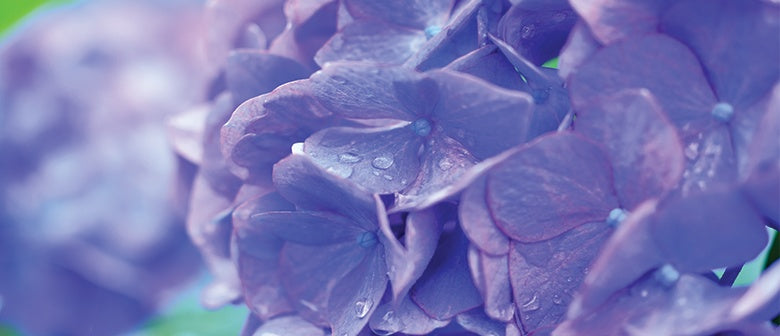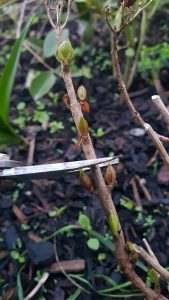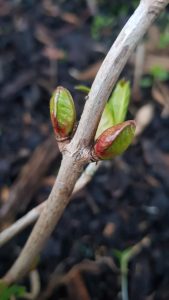How to Prune Hydrangeas
Hydrangeas are a very sought after plant, and have been for many years. They have beautiful big, showy flowers making them a must in many gardens. They are a versatile shrub that require very little attention and they are great in pots and perfect for use in flower arrangements, especially because they can bloom for such a long time.
While all this sounds amazing and it is, there can be uncertainty and a little confusion when it comes to pruning hydrangeas. This may be because certain varieties of hydrangeas flower on different types of wood, so in order to explain how to prune I will need to go over the different varieties with you so you don’t cut off any potential flowering stems for the coming season.
Now just to note you don’t have to prune hydrangeas at all, you can leave them and they will be just fine. They will continue to grow and flower, but pruning does help keep the shape looking great, especially if it starts to get leggy. It helps to keep the size in check and it also helps produce better quality flowers. If you miss a year of pruning it won’t hurt, and if the particular hydrangea you want to prune is very out of shape, you may want to cut it back hard and go for a year without flowers all together.
Large leaf Varieties: Hydrangea macrophylla (Mophead) and (Lacecap)
The most popular hydrangeas here in NZ and the type that springs to mind when talking about our beloved hydrangea are the large leaf varieties, either the mophead or the lacecap. Mopheads and lacecaps are very similar in structure and leaf, but their flowers are noticeably different. Mop heads have that big fluffy, pom pom type flower that many of you might be familiar with. Lacecaps are more flat and not as fluffy with delicate, single flowers surrounding a head of small flower buds in the middle. Both of these varieties flower on old wood, the stem that produced the previous year. This means you cannot do extreme pruning if you want flowers for the upcoming season.
Timing
The best time to prune hydrangeas is mid to late winter. Some people even hold off a bit longer in case there are any late frosts, so early spring is often an ideal time for pruning. Late frosts tend to damage any new buds that come through after pruning. If you prune hydrangeas too early you may promote new growth so holding off a bit is the best thing to do.
What you will need
- Gardening gloves
- A pair of sharp secateurs
How to prune mopheads and lacecaps
- Prune back any damaged or dead stems, take them right back to the base. Removing any diseased or damaged stems is a must in any pruning task. If you are unsure if a stem is dead, you can scrape the stem with your fingernail, if it is green underneath it is still alive but if it is brown, you know for certain it has passed it’s time.

- Prune out any weak or spindly growth, also very old stems can be removed, take them right back to the base.
- Cut out any branches that are crossing over, you want to create a great shaped plant.
- You want to then cut back shoots that have flowered, they should still be visible (dead and brown as they may be). Focus on what size you would like the plant to be and find the fattest, biggest two buds that are next to each other and cut just above the buds.
- Two big buds together means that they will be flower buds, the smaller buds are leaf buds.
- Don’t be particular on how you make the cut, hydrangeas are forgiving. Try and make the cut as clean and tidy as possible, but the angle isn’t that important.
- Leave all shoots that didn’t have any flowers on where possible.

Quercifolia, Oakleaf varieties
These varieties are easy to spot with oak shaped leaves, the foliage even changes colour with the seasons from green to red. These varieties also bloom on old wood.
Oakleaf varieties are best left alone but if light pruning is required to keep the shape, remember just like the mopheads they flower on old wood so take them back to the flower buds.
Prune away any dead, dying or diseased branches to improve the health of your plant.
Paniculata varieties
These varieties have a distinct triangle or cone shaped flower that often starts as a white or cream and fades to pink or in the case of hydrangea limelight, starts as lime green then turns to white. They tend to have much smaller leaves than the previous varieties. Paniculata varieties bloom on new wood, making them very easy to prune, you don’t have to worry about cutting back too much, they will still bloom as any new wood produced has the potential of flowering.
You can prune hydrangeas paniculatas very hard, every year if you like. You can prune them right back to 15cm from the ground, leaving just a few buds on each stem or you can just deadhead your plants if you would prefer to keep the height. It is really up to you with these plants.

















